PSY 246: Midterm
5.0(4)
5.0(4)
Card Sorting
1/219
Earn XP
Description and Tags
Study Analytics
Name | Mastery | Learn | Test | Matching | Spaced |
|---|
No study sessions yet.
220 Terms
1
New cards
frontal lobe
front of brain

2
New cards
parietal lobe
above occipital lobe
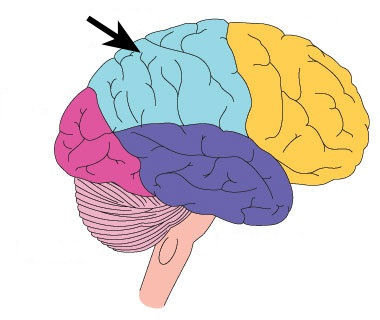
3
New cards
occipital lobe
back of brain, vision
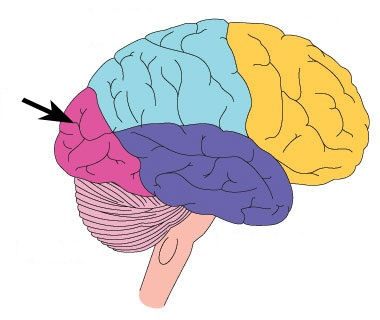
4
New cards
temporal lobe
under the frontal lobe
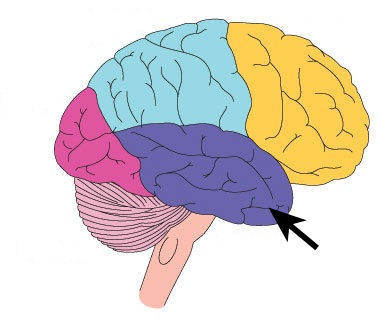
5
New cards
What are the cerebral hemispheres?
the two halves of the brain
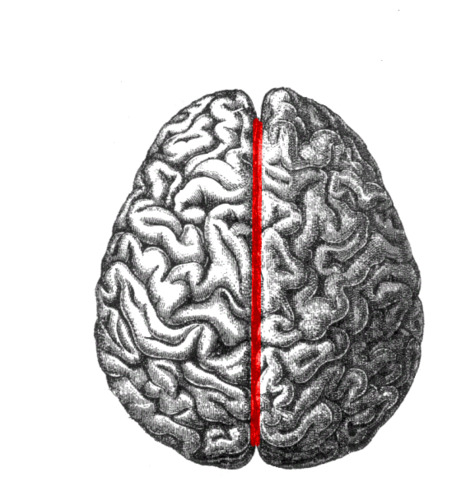
6
New cards
what are the cerebral hemispheres separated by?
longitudinal fissure
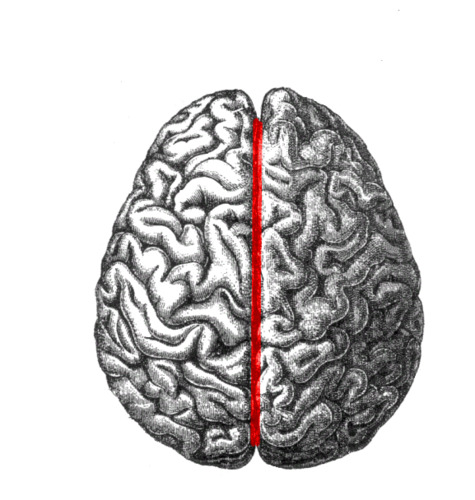
7
New cards
What do the cerebral hemispheres do?
Control voluntary movement, interpret sensory information and are responsible for learning and memory
8
New cards
central sulcus
separates frontal and parietal lobes
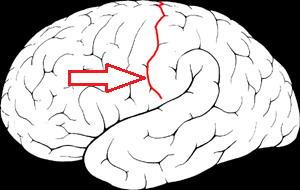
9
New cards
corpus callosum
the large band of neural fibers connecting the two brain hemispheres and carrying messages between them
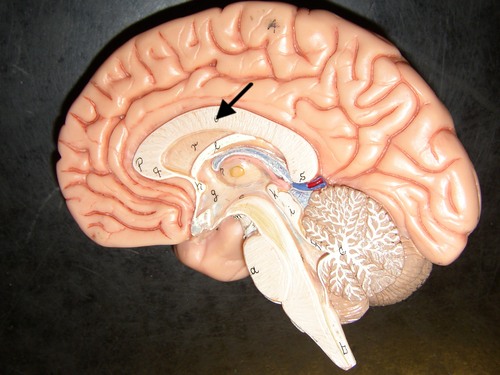
10
New cards
what is the benefit of the corpus callosum?
the communication between the hemispheres allows for faster processing and thinking
11
New cards
Thalamus
the brain's sensory control center, located on top of the brainstem; it directs messages to the sensory receiving areas in the cortex and transmits replies to the cerebellum and medulla
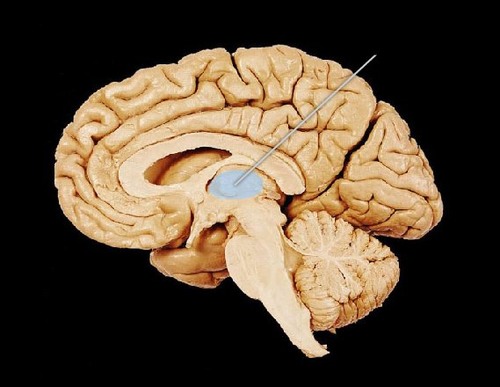
12
New cards
brain lateralization
The organization of the brain into right and left hemispheres, with each hemisphere performing unique and specialized functions
13
New cards
why is brain lateralization important?
it allows for parallel processing and the redundant systems allow for processing to occur if one hemisphere is damaged
14
New cards
motor system (efferent)
Carries messages from the central nervous system to muscles and glands
15
New cards
cerebral dominance
refers to hemisphere that is dominant for language (usually left hemisphere)
16
New cards
Anterior
front
17
New cards
Posterior
back
18
New cards
superior/dorsal
top
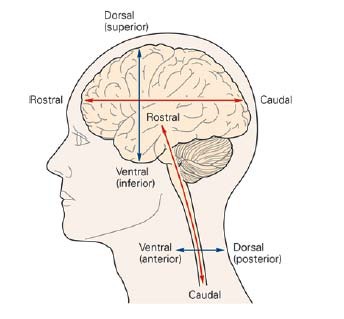
19
New cards
inferior/ventral
bottom
20
New cards
anterior dominant cortex controls...
expressive language (including writing)
21
New cards
posterior dominant cortex controls...
expressive language (including reading)
22
New cards
left hemisphere of brain
controls right side of the body and is logical, contains mathamatics, lauguage, & speech
23
New cards
right hemisphere of brain
plays significant role in prosodic aspects of language
24
New cards
expressive prosody is controlled by...
the non dominant anterior cortex
25
New cards
receptive prosody is controlled by...
the non dominant posterior cortex
26
New cards
language deficits
most commonly produced by focal lesions, but more diffuse lesions can product subtle language deficits in high level language skills such as organization
27
New cards
Broca's area
Anterior structure responsible for ability to speak or write (motor patterns)
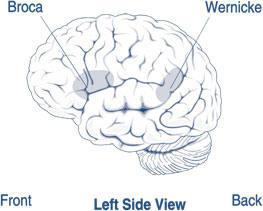
28
New cards
Wernicke's area
Posterior structure responsible for auditory images/ Information
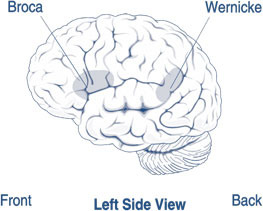
29
New cards
Arcuate Fasciculus
fibre track connecting Wernicke's and Broca's areas
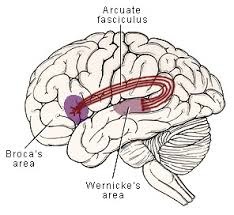
30
New cards
Broca's aphasia
o Halting speech and writing
o Stroke damage in Broca's area
o Non-fluid Agrammatic speech
o Communication of language not great
o Stroke damage in Broca's area
o Non-fluid Agrammatic speech
o Communication of language not great
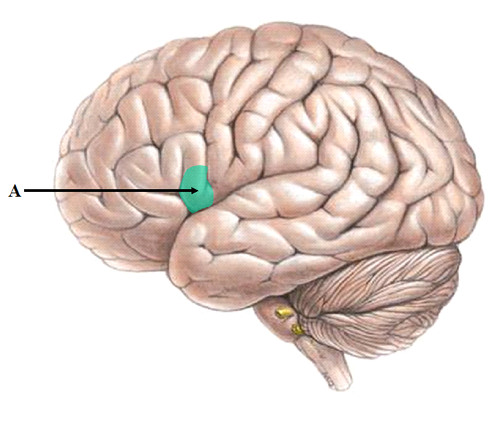
31
New cards
Wernicke's aphasia
o Fluent Aphasia
o Echolalia - repetition of words over and over again (severe cases repeat same word)
o No complete answers or understanding
o Understanding of language is not great
o Echolalia - repetition of words over and over again (severe cases repeat same word)
o No complete answers or understanding
o Understanding of language is not great
32
New cards
progressive non-fluent aphasia (primary progressive aphasia)
- degenerative disease that looks like Broca's (expressive deficits)
- early to mid 50's onset
- caused by frontotemporal lobar degeneration or frontotemporal dementia
- early to mid 50's onset
- caused by frontotemporal lobar degeneration or frontotemporal dementia
33
New cards
expressive deficits
-Reduced vocabulary
-Omission/addition of words
-Stereotypic speech
-Delayed or reduced output of speech
-Hyperfluent speech
-Word substitutions
-Omission/addition of words
-Stereotypic speech
-Delayed or reduced output of speech
-Hyperfluent speech
-Word substitutions
34
New cards
Expressive aphasia (Broca's)
- left posterior frontal (Broca's area)
- impaired speech
- impaired writing
- impaired repetition
- grossly intact comprehension
- grossly intact reading
- impaired speech
- impaired writing
- impaired repetition
- grossly intact comprehension
- grossly intact reading
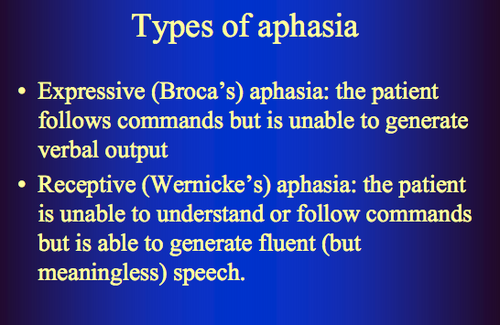
35
New cards
receptive aphasia (Wernicke's aphasia)
- left posterior temporal/parietal (wernicke's area)
- fluent, nonsensical speech
- Impaired comprehension
- impaired reading
- grossly intact writing
- mildly impaired repetition
- fluent, nonsensical speech
- Impaired comprehension
- impaired reading
- grossly intact writing
- mildly impaired repetition
36
New cards
Semantic Dementia (SD)
Fluent speech, anomia, impaired comprehension, empty speech, semantic memory network broken, looks like Wernicke's aphasia
37
New cards
Global aphasia
- left anterior and posterior
- impaired speech
- impaired comprehension
- impaired reading
- impaired writing
- impaired repetition
- impaired speech
- impaired comprehension
- impaired reading
- impaired writing
- impaired repetition
38
New cards
Mixed Transcortical Aphasia
- left anterior and posterior, sparing broca's and wernicke's areas
- impaired speech
- impaired comprehension
- impaired reading
- impaired writing
- intact repetition
- impaired speech
- impaired comprehension
- impaired reading
- impaired writing
- intact repetition
39
New cards
Transcortical Motor Aphasia
- left anterior frontal, mildly affected Broca's area
- impaired speech
- typically intact comprehension
- typically intact reading
- impaired writing
- typically intact repetition
- impaired speech
- typically intact comprehension
- typically intact reading
- impaired writing
- typically intact repetition
40
New cards
Transcortical Sensory Aphasia
- posterior parietal/temporal cortical lesion with sparring of wernicke's area
- impaired speech
- impaired comprehension
- impaired reading
- typically intact writing
- typically intact repetition
- impaired speech
- impaired comprehension
- impaired reading
- typically intact writing
- typically intact repetition
41
New cards
Conduction aphasia
- lesion of the acute fasciculus which connects broca's and wernicke's area
- grossly intact speech
- intact comprehension
- intact reading comprehension, oral reading poor due to paraphasias
- grossly intact writing
- severely impaired repetition
- grossly intact speech
- intact comprehension
- intact reading comprehension, oral reading poor due to paraphasias
- grossly intact writing
- severely impaired repetition
42
New cards
Wernicke-Lichtheim Model: Conduction Aphasia
- arcuate fasciculus impacted, nothing else
- unable to repeat
- unable to repeat
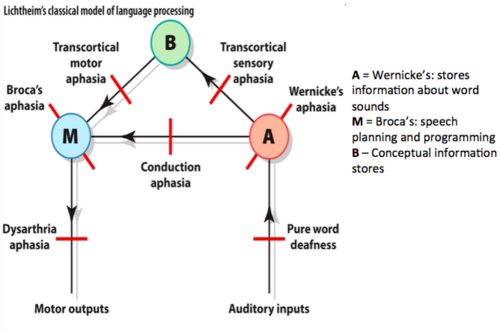
43
New cards
Wernicke-Lichtheim Model: Wernicke's Aphasia
- Auditory images region impacted
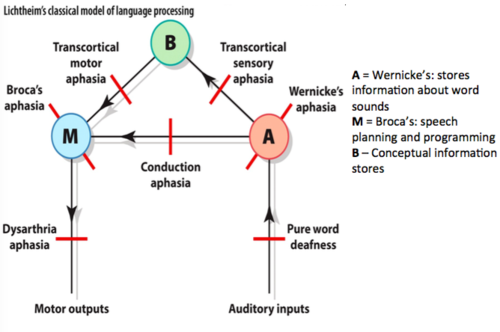
44
New cards
Wernicke-Lichtheim Model: Transcortical Sensory Aphasia
- damage between Wernicke's and Concept area
- able to repeat because arcuate fasciculus is intact
- able to repeat because arcuate fasciculus is intact
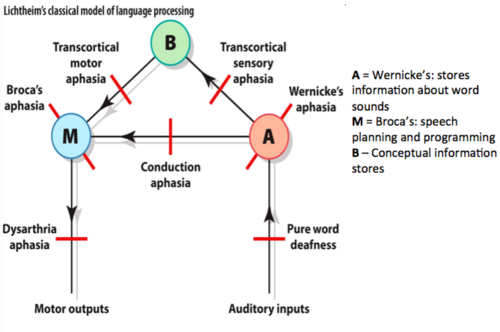
45
New cards
Wernicke-Lichtheim Model: Transcortical Motor Aphasia
- damage between concept area and Broca's
- able to repeat, can't produce speech
- able to repeat, can't produce speech
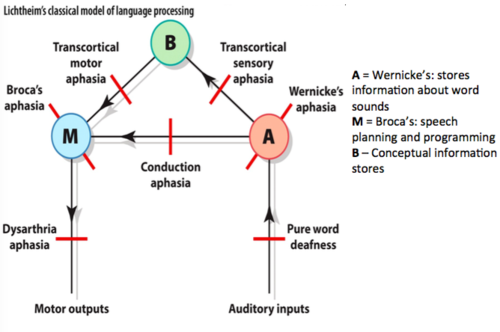
46
New cards
Wernicke-Lichtheim Model: Broca's Aphasia
- damage to speech region
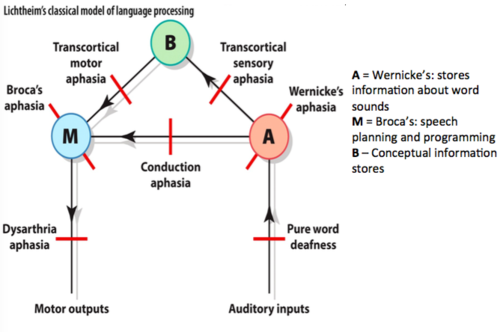
47
New cards
What anatomical areas are close to Wernicke's area?
Wernicke's area located in temporal lobe, close to supramarginal gyrus, angular gyrus, primary auditory area
48
New cards
What anatomical areas are close to Broca's area?
Broca's area located in frontal lobe, close to primary motor strip
49
New cards
What is the purpose of redundant, communicating arteries in brain?
To try and avoid catastrophic damage to the tissues
50
New cards
medulla and pons functions
associated with basic life functions
51
New cards
Cerebellum functions
associated with balance, postuire, motor coordination, implicit learning
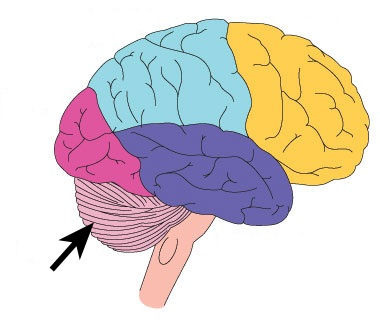
52
New cards
The frontal lobes are associated with
motor functions, expressive language, "executive" functions (e.g., behavioral planning, monitoring/regulation, inhibition, motivation, judge,ent), and mood/affect (emotional regulation) Also includes olfactory cortex.
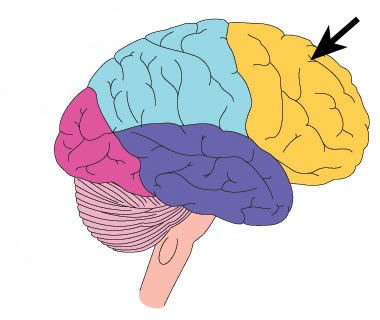
53
New cards
parietal lobe function
is associated with somatsensory functions, spatial awareness/attention and complex visuoperceptual processing (reading and shape orientation/direction)
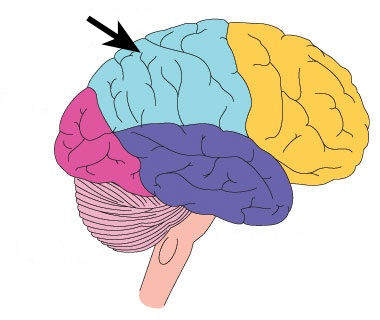
54
New cards
The temporal lobe is associated with:
receptive language, primary auditory cortex, declarative memory, visuoperceptual processing (form/shape integration), mood/affect, and olfactory cortex.

55
New cards
Occipital lobe associated with
o primary and secondary visual processing.
56
New cards
Sylvian fissure (Lateral fissure)
Separates the temporal from the frontal lobe, and the temporal from the parietal lobe
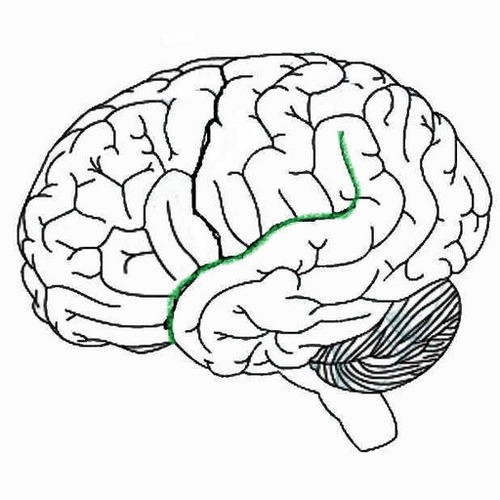
57
New cards
Sulcus
indentations in brain
58
New cards
fissure
large sulcus (indentation)
59
New cards
gyrus (gyri)
rounded elevation on the surface of the cerebral hemispheres
60
New cards
superior temporal gyrus
the large gyrus of the temporal lobe adjacent to the lateral fissure; the location of auditory cortex
61
New cards
anterior cerebral artery
The arteries that supply oxygen to most medial portions of frontal lobes and superior medial parietal lobes; strokes here can affect leg use
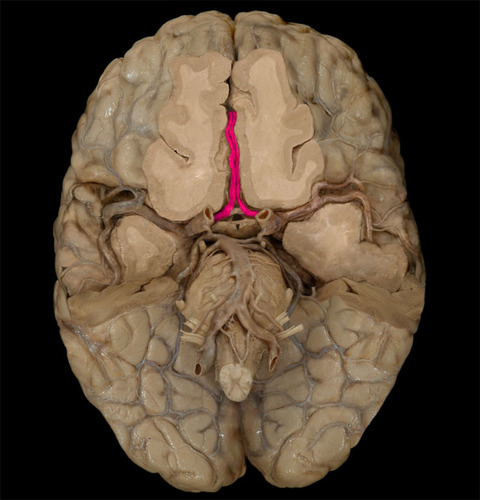
62
New cards
anterior communicating artery
connects right and left anterior cerebral arteries
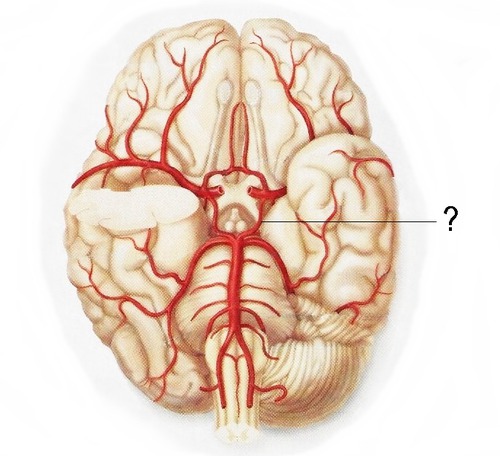
63
New cards
posterior cerebral artery
supplies occipital lobe
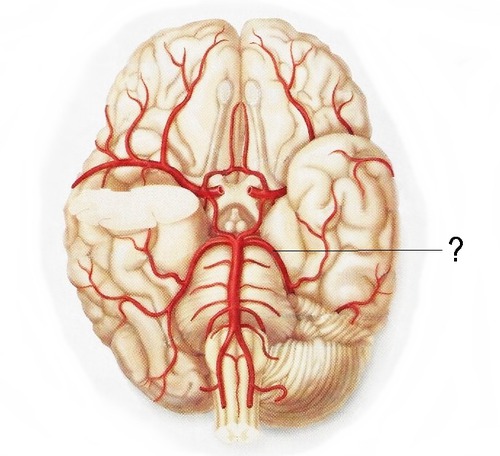
64
New cards
middle cerebral artery stem
- largest branch of internal carotid artery,
- supplies blood to entire lateral cortex.
- involved in language because it provides blood to subcortical structures of temporal and frontal lobes
- supplies blood to entire lateral cortex.
- involved in language because it provides blood to subcortical structures of temporal and frontal lobes
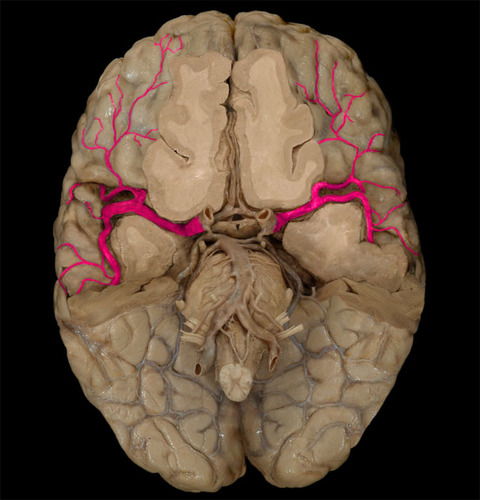
65
New cards
lenticulostriate arteries
small, deep penetrating arteries that branch from the middle cerebral artery, very thin and vulnerable to strokes

66
New cards
language assessment
includes expressive skills, Receptive skills, repetition, prosody
67
New cards
language assessment: expressive skills
- fluency
-articulation
-organization
-writing
-articulation
-organization
-writing
68
New cards
language assessment: receptive skills
- naming
- aural comprehension
- reading
- aural comprehension
- reading
69
New cards
language assessment: prosody
- expressive prosody
- receptive prosody
- receptive prosody
70
New cards
What is the relay center of the brain?
the thalamus
71
New cards
paraphasia
-phonemic
-semantic
-semantic
72
New cards
right hemisphere contributions to language
- Good auditory comprehension of language
-If left hemisphere removed early, the right hemisphere can acquire language
- If left hemisphere removed in adults, severe deficits in speech but still good auditory comprehension
-Removal of the right hemisphere produces subtle changes in language comprehension
-If left hemisphere removed early, the right hemisphere can acquire language
- If left hemisphere removed in adults, severe deficits in speech but still good auditory comprehension
-Removal of the right hemisphere produces subtle changes in language comprehension
73
New cards
Hemispherectomy
removal of a hemisphere
74
New cards
Heschel's gyrus
- primary auditory cortex, anterior to Wernicke's area in right hemisphere
- important for words
- important for words
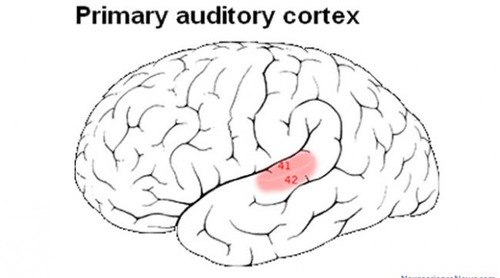
75
New cards
right hemisphere damage
- unable to process non-verbal sounds
- auditory agnosia and amusia
- auditory agnosia and amusia
76
New cards
pure word deafness
the ability to hear, to speak, and (usually) to read and write without being able to comprehend the meaning of speech; caused by damage to Wernicke's area or disruption of auditory input to this region
77
New cards
what is the right hemisphere's main contribution in langauge?
prosody
78
New cards
receptive aprosody
- associated with lesion in right hemisphere temporoparietal area
- patient unable to appreciate tone, inflection and expression of another even in repetition
- patient can express inflection, tone, emotion
- patient unable to appreciate tone, inflection and expression of another even in repetition
- patient can express inflection, tone, emotion
79
New cards
expressive aprosody
- associated with lesion in right hemisphere frontal region, next to left hemisphere's Broca's area
- patient can't express inflection and tonal quality of emotion
- patient can appreciate another's inflection and tone
- patient can't express inflection and tonal quality of emotion
- patient can appreciate another's inflection and tone
80
New cards
memory
- encode, retain, retrieve
- verbal (lateralized function), non verbal
- hierarchical function - requires the basics such as attention and other cognitive components to be intact
- verbal (lateralized function), non verbal
- hierarchical function - requires the basics such as attention and other cognitive components to be intact
81
New cards
sensory registration
- auditory, visual, gustatory, tactile, or olfactory information enters
-consciously registered, brain deems importance of information very quickly
- lasts ms to s
- attention required for next step
-consciously registered, brain deems importance of information very quickly
- lasts ms to s
- attention required for next step
82
New cards
short-term memory
- working memory, but more of an attention system
- normal person able to remember 7±2 items in STM
- brief system
- chunking of information can help
- organizing or rehearsal required for next step
- normal person able to remember 7±2 items in STM
- brief system
- chunking of information can help
- organizing or rehearsal required for next step
83
New cards
long-term memory
- includes everything that can be recalled within few minutes
- relatively permanent
- can be accessed
- consolidation process used in LTM
- relatively permanent
- can be accessed
- consolidation process used in LTM
84
New cards
LTM (long term memory) factors
- rehearsal
- emotional salience: things are easier to remember when there is emotion attached
- Levels of encoding:
o Elaboration: building new information on top of what is known
o State dependent learning: able to recall better when in same internal state as when information was learned
o Environmental dependent learning: internal and external cues help with recollection of information
- emotional salience: things are easier to remember when there is emotion attached
- Levels of encoding:
o Elaboration: building new information on top of what is known
o State dependent learning: able to recall better when in same internal state as when information was learned
o Environmental dependent learning: internal and external cues help with recollection of information
85
New cards
Papez circuit
- a circuit of structures interconnecting hippocampus, mamillary bodies, thalamus and cingulate gyrus.
- involved in forming new autobiographical memories and declarative memories
- involved in forming new autobiographical memories and declarative memories
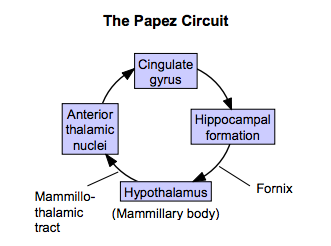
86
New cards
stages of memory
1. sensory storage
- no attention = forgetting
- attention = STM
2. STM
- processing = LTM
- no processing = forgetting
3. LTM
- encoding from STM
- no attention = forgetting
- attention = STM
2. STM
- processing = LTM
- no processing = forgetting
3. LTM
- encoding from STM
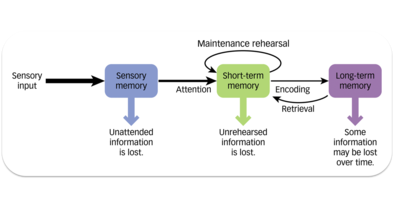
87
New cards
explicit memory (declarative memory)
- can declare it
- contains episodic memory and semantic memory
- Verbal-visual
- Intentional- incidental
- Recent - remote
- Frequently disrupted due to many etiologies of disease
- contains episodic memory and semantic memory
- Verbal-visual
- Intentional- incidental
- Recent - remote
- Frequently disrupted due to many etiologies of disease
88
New cards
episodic memory (part of explicit memory)
- truly autobiographical or autobiographically bound
o - where you learned it, when you learned it
o - retrieval of the learning event
o - where you learned it, when you learned it
o - retrieval of the learning event
89
New cards
semantic memory (part of explicit memory)
- facts
- language concept area
- not time dependant
- Retrieval of a fact
- No idea where or when you learned it - it is a fact
- language concept area
- not time dependant
- Retrieval of a fact
- No idea where or when you learned it - it is a fact
90
New cards
implicit memory
- Skills and procedures
- Origins of learning often lost
- Often preserved in disease due to more distributed nature of this neuroanatomically
- Origins of learning often lost
- Often preserved in disease due to more distributed nature of this neuroanatomically
91
New cards
Why are there more clinical problems associated with declarative memory than non-declarative memory?
Declarative memory involves the medial temporal lobes which are neuroanatomically vulnerable. Non-declarative memory is diffused across many subcortical structures meaning it is harder to damage
92
New cards
anterograde amnesia (AA)
- damaged episodic memory due to damage in hippocampus or other regions of papez circuit
- inability to form new memories
- Cannot learn new information
- Most common memory impairment
- patient HM: had bilateral resection of hippocampus
- inability to form new memories
- Cannot learn new information
- Most common memory impairment
- patient HM: had bilateral resection of hippocampus
93
New cards
retrograde amnesia (RA)
- loss of memory for events prior to injury
- temporally graded: tend to remember less closer to injury, and more further from memory
- rarely spans years
- very rare to have RA without AA
- can have AA without RA
- temporally graded: tend to remember less closer to injury, and more further from memory
- rarely spans years
- very rare to have RA without AA
- can have AA without RA
94
New cards
encoding
the process of getting information into the memory system,
95
New cards
Consolidation
taking encoded information and storing it more permanently, associated with neuroanatomical change in brain making new circuit
96
New cards
retrieval
accessing stored memory, do better with cues than free recall
97
New cards
primacy effect
tendency to remember words at the beginning of a list especially well
98
New cards
recency effect
tendency to remember words at the end of a list especially well
99
New cards
memory assessment focuses on...
- immediate: asking for information right away
- learning: repeat and test information to see progress
- delayed: distract to prevent rehearsal and see consolidation
- cued: help to assess retrieval
- recognition: help to asses retrieval
- learning: repeat and test information to see progress
- delayed: distract to prevent rehearsal and see consolidation
- cued: help to assess retrieval
- recognition: help to asses retrieval
100
New cards
memory impairments caused by....
- Orbitofrontal and medial frontal structures
- Diencephalic lesions
- Severe mesial temporal lobe damage
- Diencephalic lesions
- Severe mesial temporal lobe damage